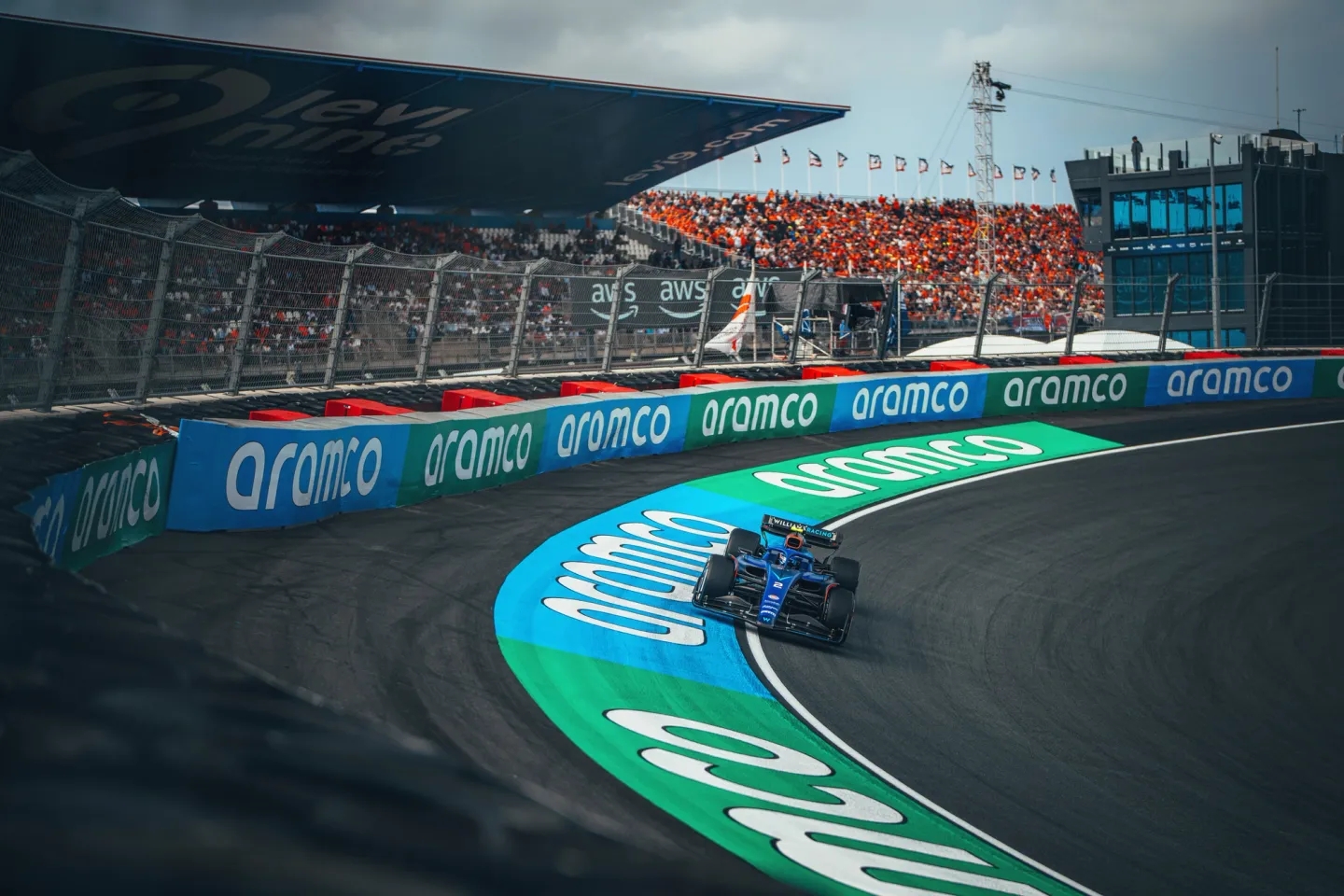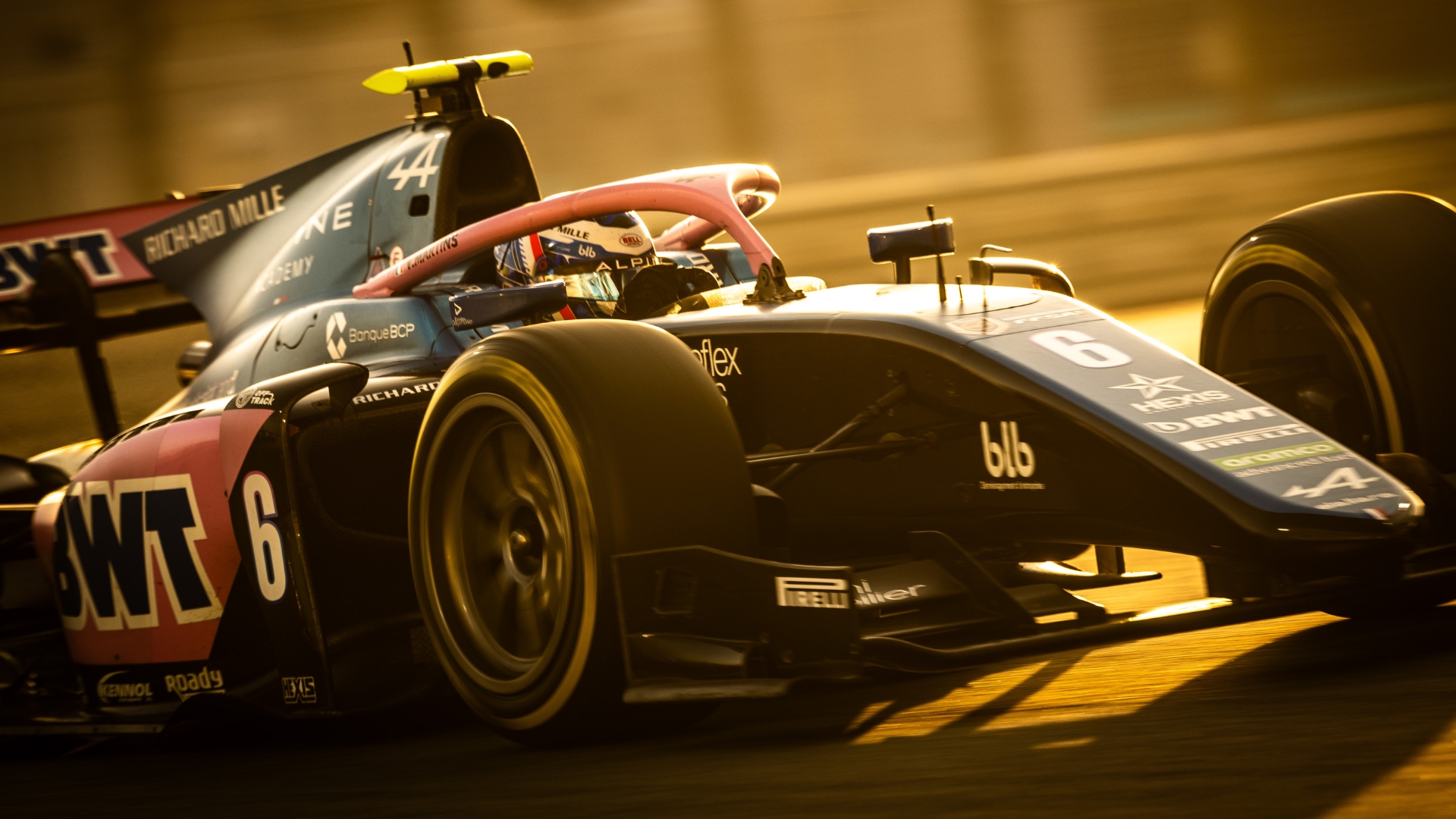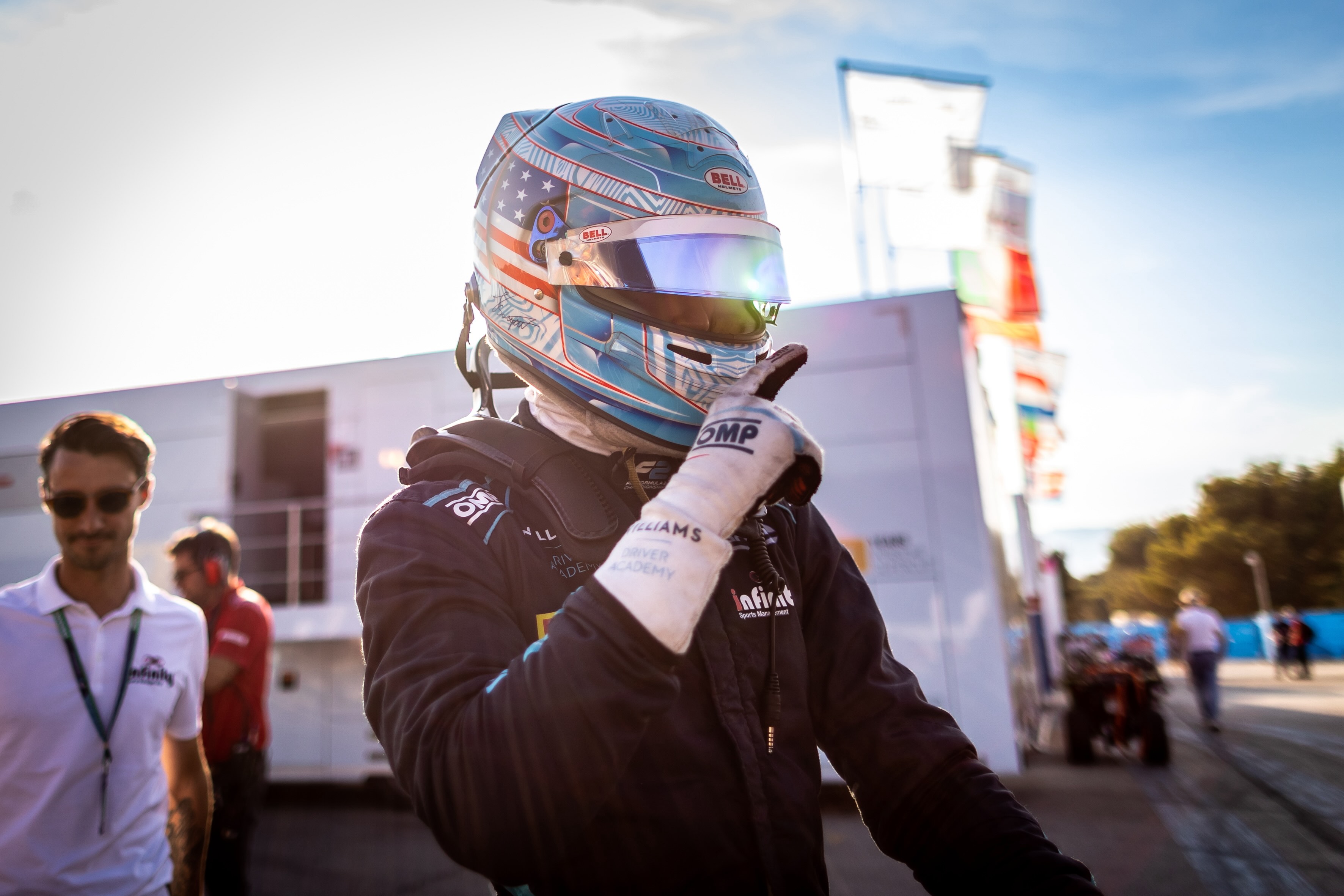The final confirmation of the second Williams seat in F1 was a long time coming, but eventually it was announced that Logan Sargeant would be retained for a second season. It has been a difficult season for the American, but this was to be expected after just one year in F2. Did he deserve the new deal, and were there drivers from junior single-seaters who should have been given the opportunity at the highest level? Feeder Series analyses.
By Martin Lloyd
Sargeant’s debut campaign in F1 was a disappointing one marred by a spate of accidents. The 22-year-old American struggled to find form until the end of the season and never managed to beat teammate Alex Albon in any qualifying session and race they both finished.
Having only signed a one-year deal for 2023 and with a different team principal to the one who signed him at the helm, questions quickly arose over Sargeant’s place in the team.
Clearly, alternatives were available. Liam Lawson, fresh from a five-race F1 cameo, was an option, although the New Zealander indicated on F1’s Beyond the Grid podcast that he was unwilling to follow Albon’s route from the Red Bull system to Williams. Meanwhile in F2, Théo Pourchaire won the 2023 championship after having finished fifth and second in 2021 and 2022 respectively, demonstrating consistent speed year on year. And after several strong F3 and F2 seasons of his own, Frederik Vesti ended the year a close second to Pourchaire, and he crucially has the backing of Williams engine supplier Mercedes. All three performed well in junior series, just as Sargeant had.
Even so, Williams were right to give Sargeant a sophomore year. It would always have been a tough ask for a rookie Sargeant with just one year of F2 experience to match an experienced teammate with three F1 campaigns under his belt. Moreover, Williams had just spent a year nurturing their own rookie in his first year of F1. Why would they do this again when they could continue the process with their own driver, who already showed progress with improved results towards the end of 2023?
Compared with Albon in the first 13 comparable races, using the pair’s best times set in the same part of qualifying, Sargeant was an average of 0.560s behind. In the final five comparable races, Sargeant’s gap to Albon averaged 0.358s.
The key word is comparable. For three of the last seven races, Sargeant did not set a representative qualifying time because of either an accident or track-limits violations. Even in Zandvoort in August, when he made Q3 albeit with a lap six tenths off Albon, he crashed heavily, adding to an already expensive season for the American driver and his cash-strapped Williams team.

This propensity for getting caught up in incidents, as some junior single-seater fans may recall, is not entirely new.
While fellow 2023 F1 rookie Oscar Piastri won the 2020 F3 title through consistency and a clean on-track presence, Sargeant lost it because of his involvement in a series of incidents, even those that weren’t his fault. Two collisions at Monza with Clément Novalak and Vesti followed by a first-lap incident with Lirim Zendeli at Mugello ended his title hopes.
In F2, he was involved in race-ending crashes in the Hungaroring sprint, Spa sprint, Zandvoort feature and Monza feature races. These incidents eventually put paid to his hopes of finishing second in the standings while endangering his provisional F1 seat for 2023. Had he lost more points, he would not have finished in the top five of the championship and thus would have failed to qualify automatically for the FIA Super Licence he needed to race in F1.
The points largely went away in 2023 given Williams’ backmarking status, but the accidents remained. Sargeant could easily have been replaced if Williams had felt there was a better option. Fortunately for him, no driver in F2 this year had a Piastri-style dominant debut season that would have seriously strengthened their case for his seat. From this year’s set of prospects, Pourchaire was unlikely to be considered in his third year despite being the champion, while the highest-placed rookie, Victor Martins, finished only fifth.

Sargeant, to his credit, has fared well against the top F2 drivers of 2023 in junior series head-to-heads.
In 2022, he finished fourth in F2 with 148 points, comprehensively beating fellow rookie Vesti. This was in addition to 2020’s triumph of 13.5 points over Vesti, when both raced for Prema in F3.
Sargeant’s matching of Lawson last year – the pair were separated by one point at season’s end – is all the more impressive considering the highly rated Red Bull junior was in his second F2 season while the Williams junior was a rookie. Pourchaire scored more points than Sargeant in 2022 but was again in his second season. Indeed, Sargeant had matched the Frenchman in the aforementioned 2020 F3 title battle, although this was in Pourchaire’s impressive rookie season compared to Sargeant’s second year.
Some may argue that Pourchaire, as the 2023 champion, should have been given a race seat in F1 in place of, say, Sargeant. Evidently, the Frenchman has immense talent, but many consider a driver in their third F2 year to have not progressed sufficiently enough to reach F1. This is especially true when Pourchaire’s title-winning campaign, which ended in a final-race showdown with Vesti, is compared to Felipe Drugovich’s domination in 2022, when the Brazilian left Pourchaire 101 points behind and just 15 ahead of Lawson and Sargeant for second place.
Despite their titles, drivers such as Pourchaire and Drugovich may never get an F1 chance. This is not the fault of F1 decision-makers; if drivers are immediately quick in F2, they will progress over those who take years to build speed. Motorsport is a cut-throat business, and not even a title guarantees progress up the ladder.

Sargeant is lucky. He was comprehensively outclassed by his teammate, something that had never happened in his junior career, yet he remained in F1 because there was no obvious candidate to replace him. With top results across multiple junior single-seater series, including an unlikely win for F3 backmarkers Charouz in 2021 as he waited to move upwards, Sargeant caught the attention of the Williams F1 academy, who helped him make the step up to the top level.
Of course, Sargeant needs to improve much further in 2024 to prove Williams right. His penchant for accidents and track limits violations started to become embarrassing for his team, especially when compared to Albon’s consistent points-scoring and limited mistakes. Lawson, Pourchaire, Vesti and the other junior single-seater frontrunners of late are waiting, and with half of the F1 grid out of contract at the end of 2024, Williams will have options for their driver line-up.
This is unlikely to be the start of a new trend wherein F1 teams prioritise current drivers over talent from the junior formulae. Instead, 2023 appears more likely to be an anomalous season in which no feeder series driver proved themselves fast enough to make the final step up. F1’s aero philosophy since 2022 diverges from that of the Dallara F2 2018 used for the past six F2 seasons, and Williams may have realised that the differences between them are too great to justify taking a risk on a young driver.
This will all change next year with F2’s new chassis, which mimics the more streamlined F1 aero features. Teams will thus get a better sense of F1 readiness from F2 prospects’ results, and Sargeant will thus face a stiffer challenge, without the alibi of having been a rookie.
His potential is undeniable – the only question is whether he can show it amid the pressure of having the hottest seat in F1.

Header photo credit: Sebastiaan Rozendaal / Dutch Photo Agency
Make a one-time donation
Make a monthly donation
Make a yearly donation
Choose an amount
Or enter a custom amount
Your contribution is appreciated.
Your contribution is appreciated.
Your contribution is appreciated.
DonateDonate monthlyDonate yearlyDiscover more from Feeder Series
Subscribe to get the latest posts sent to your email.

